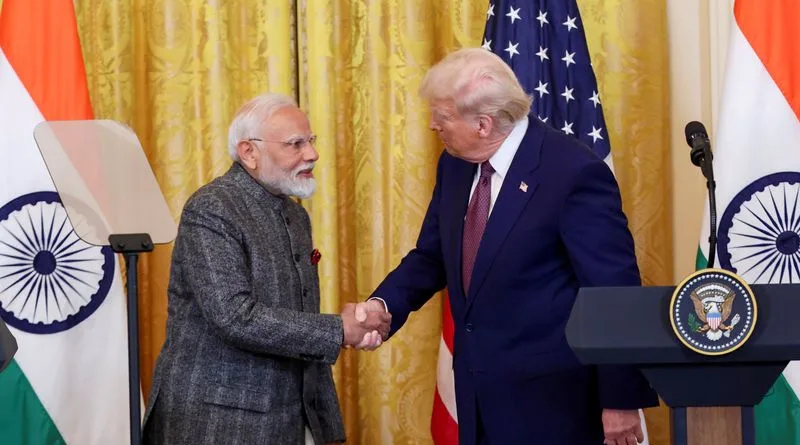India and U.S. Close to Historic Trade Deal Reducing Tariffs on Indian Exports
Bengaluru – India and the United States are reportedly on the verge of finalizing a major trade agreement that could significantly strengthen economic ties between the two nations, according to reports from Indian business daily Mint.
The deal, long in discussion, is expected to reduce U.S. tariffs on Indian imports from the current 50% to a more moderate 15% to 16%, creating a favorable environment for Indian exporters and fostering stronger bilateral trade relations.
The potential agreement is a milestone in India-U.S. trade relations, particularly for sectors such as energy, agriculture, and non-genetically modified (non-GMO) agricultural commodities.
Under the terms of the proposed arrangement, India may gradually scale back its imports of Russian crude oil, aligning with global energy strategies, while simultaneously expanding its imports of U.S. products like corn and soymeal.
Such measures are expected to create mutual economic benefits, enhancing market access and trade stability.
The move comes after a productive phone discussion between Prime Minister Narendra Modi and U.S. President Donald Trump, in which both leaders expressed commitment to strengthening economic cooperation.
Modi extended Diwali greetings to Trump, emphasizing the shared values and democratic principles that unite the two countries.
“On this festival of lights, may our two great democracies continue to illuminate the world with hope and stand united against terrorism in all its forms,” Modi said, signaling both goodwill and strategic partnership.
Reducing tariffs to 15%-16% represents a substantial step forward for Indian exporters. Industries ranging from textiles, leather, and pharmaceuticals to engineering goods and handicrafts are expected to benefit significantly from enhanced access to the U.S. market.
Lower tariffs can make Indian products more competitive, increase export volumes, and strengthen India’s position as a key global trading partner.
Economic analysts note that such a reduction will also likely stimulate job creation, boost manufacturing, and drive investment across Indian industries.
In addition to tariff reductions, the agreement is expected to include a mechanism for periodic review of tariffs and market access, ensuring that the trade framework remains dynamic and responsive to evolving market conditions.
This provision will provide both countries with a flexible and sustainable trade partnership, promoting long-term stability and confidence for businesses.
The discussions also highlight energy cooperation as a key component of the trade agreement.
India’s potential reduction in Russian crude imports aligns with broader international energy strategies and demonstrates India’s commitment to global energy security while maintaining diversified energy sourcing.
At the same time, increased access to U.S. agricultural exports such as non-GMO corn and soymeal will strengthen India’s food security and supply chains, benefiting farmers, traders, and consumers alike.
Economic experts view the anticipated agreement as a win-win for both countries. For India, reduced tariffs on exports to the U.S. will encourage higher trade flows, support industrial growth, and enhance global competitiveness.
For the U.S., expanded access to Indian markets, coupled with increased exports of energy and agricultural goods, strengthens bilateral economic engagement and reinforces strategic ties.
The finalization of the deal is likely to be announced at the upcoming ASEAN Summit, providing a platform to showcase strengthened India-U.S. economic cooperation on a global stage.
Observers believe that the agreement will not only boost trade volumes but also signal India’s growing prominence as a reliable and strategic trading partner in the international economy.
In conclusion, the proposed India-U.S. trade deal represents a significant step forward for bilateral trade, offering substantial benefits to industries, farmers, and consumers in both countries.
By reducing tariffs, improving market access, and encouraging economic collaboration, the agreement has the potential to enhance growth, create jobs, and reinforce a long-term strategic partnership between two of the world’s largest democracies.
This initiative underscores India’s commitment to expanding its global trade footprint while fostering mutually beneficial economic ties.



